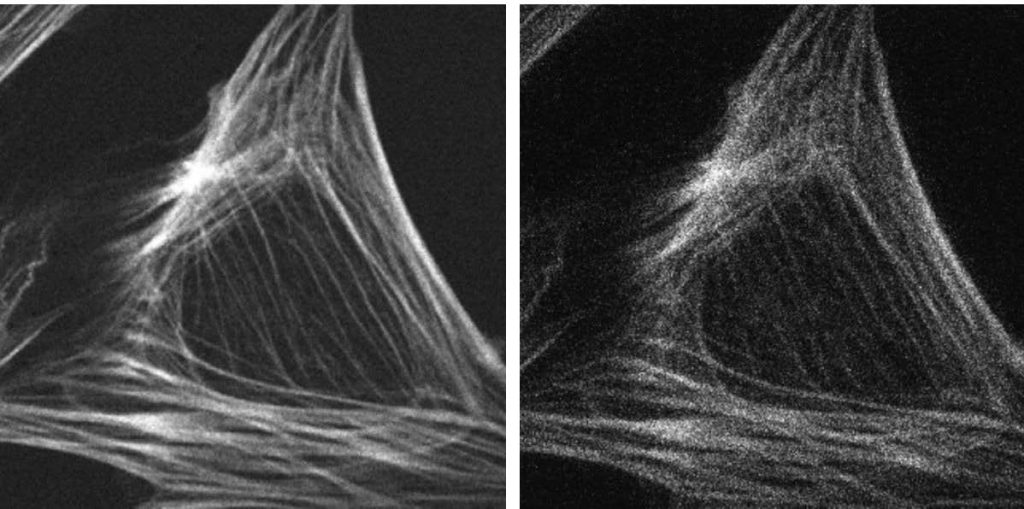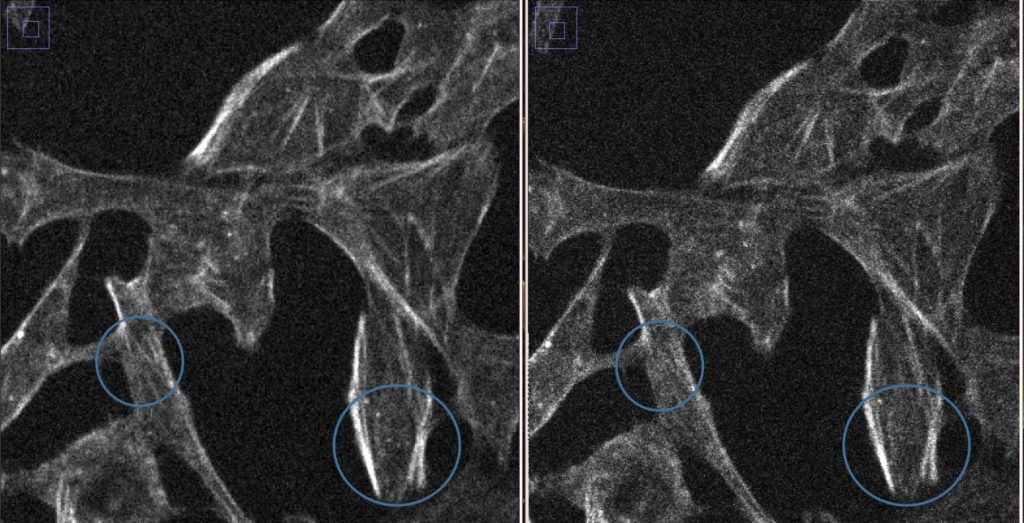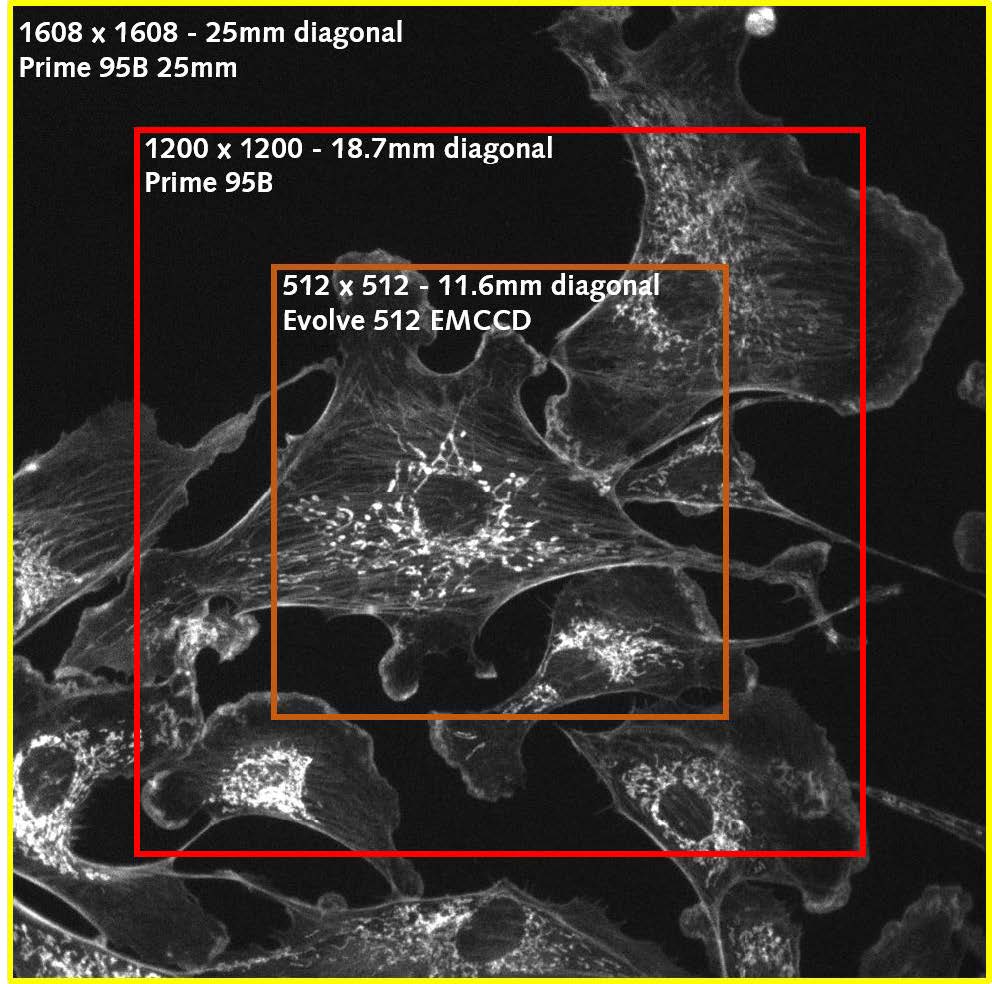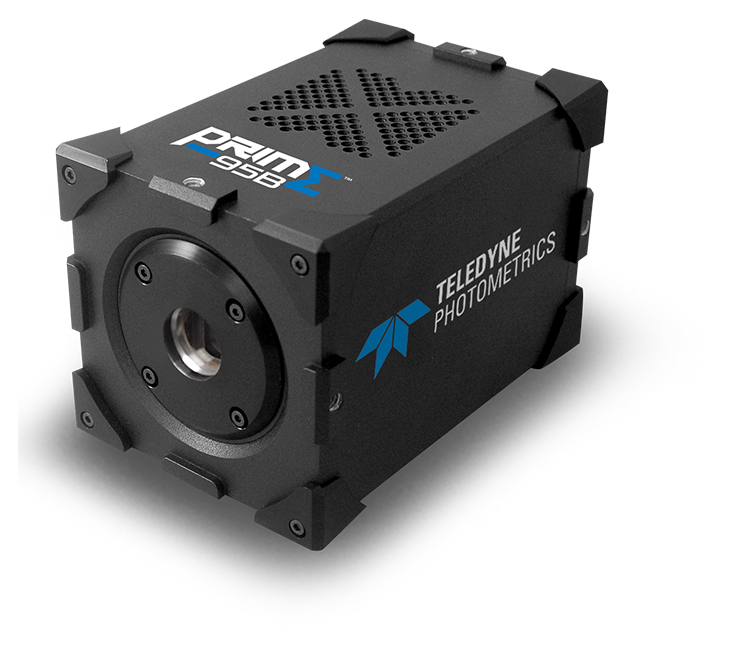Prime 95B sCMOS
The Teledyne Photometrics Prime 95B is a high sensitivity CMOS camera designed for imaging at extremely low light with high speed and low noise.
The almost perfect, 95% quantum efficient (QE) sensor of the Prime 95B has equivalent sensitivity to an EMCCD camera but with the much larger field of view (1200×1200 pixels, 18.7 mm diagonal) and high speed (82 fps, full frame) expected of a CMOS device.
Comparison To EMCCD
The Prime 95B doesn’t suffer from the complications associated with an EMCCD camera such as EM-gain degradation, where the effectiveness of the EM-gain process is reduced with usage. This results in EMCCD cameras needing to be regularly calibrated which is not only an annoyance, but there eventually comes a point when no more can be done and no signal improvement can be achieved when using EM-gain.
The EM-gain process also introduces excess noise factor, an extra source of uncertainty caused by the probability of impact ionization creating an electron. Excess noise factor multiplies other camera noise characteristics by a factor of √2, reducing the overall signal-to-noise ratio. CMOS devices such as the Prime 95B do not suffer from any of these issues. The signal-to-noise improvement of the Prime 95B can be clearly seen in Figure 2 and Figure 3 where a comparison was performed using spinning disk confocal microscopy with the Prime 95B against a 512×512 EMCCD camera and 1024×1024 EMCCD camera, respectively. The Prime 95B image looks cleaner, details are sharper and structural elements are identified that can’t be seen with the EMCCD camera.

Left captured using a 25 ms exposure time with the Prime 95B sCMOS camera,
Right captured using a 25 ms exposure time with a 512×512 EMCCD camera with 400x EM-gain.

Left Image captured using a 100 ms exposure time with the Prime 95B
Right Image captured using a 100 ms exposure time with a 1024×1024 EMCCD camera with 1200 EM-gain
Comparison To Typical sCMOS
Spinning disk confocal microscopy is, essentially, a light rejection technique so one of the main challenges is to collect as many of the emitted photons as possible so light intensity can be reduced to lessen the impact of photobleaching and photodamage on samples.
The high sensitivity of the Prime 95B means that when compared to typical sCMOS devices, the exposure time could be reduced by up to four times and still give equivalent detection. Figure 4 shows the difference in image quality that can be achieved using the same exposure time on a conventional 82% sCMOS device binned 2×2 vs the Prime 95B. Being able to reduce the exposure time when using the Prime 95B is ideal for reducing the effects of photobleaching and photodamage, maximizing signal-to-noise ratio while minimizing the harmful effects of light illumination.
Figure 4 goes on to show the difference in image quality when using the Prime 95B against a larger format 1024×1024 EMCCD camera to show how the three camera types compare. The difference in image quality and signal to noise is still clearly in favor of the Prime 95B.

Left Image captured using a 25 ms exposure time on a typical sCMOS device binned 2×2
Middle Image captured using a 25 ms exposure time with the Prime 95B
Right Image captured using a 25 ms exposure time with a 1024×1024 EMCCD camera with 400 EM-gain
Further Prime 95B Advantages
The large, 11×11 μm pixels of the Prime 95B provide additional sensitivity and have a large 80,000 e- full well capacity with a low 1.6 e- read noise, giving the 95B a very high dynamic range, ideal for performing high contrast imaging. Larger pixels also fit perfectly with high magnification objectives, achieving Nyquist sampling without the need for any additional optics with 100x magnification typically used in spinning disk confocal microscopy.
Furthermore, as research moves towards large-scale approaches, there is an increasing demand for higher throughput capabilities. To this end, a version of the Prime 95B has been created with a massive 25 mm diagonal field of view over 1600×1600 pixels. The Prime 95B 25 mm offers a significantly increased field of view over EMCCD and conventional sCMOS devices. This can be seen in Figure 5 which shows how much more of the sample can be imaged by taking advantage of a larger field of view.

Summary
We would encourage anyone considering using spinning disk confocal microscopy to request a demonstration of the Prime 95B or Prime 95B 25 mm to see the advantages they can provide.

